- Blog
- Allbirds Marketing Breakdown: How They Went from a Small Startup to a Billion-dollar Sneaker Brand in 4 Years
Allbirds Marketing Breakdown: How They Went from a Small Startup to a Billion-dollar Sneaker Brand in 4 Years
-
Nikolett Lorincz
- Marketing Breakdowns
- 6 min read
Table of Contents
Allbirds is a sustainable footwear company founded by ex-New Zealand soccer player, Tim Brown, and Joey Zwillinger. Since its launch in 2016, Allbirds set out to differentiate itself from big-name companies by focusing on three important principles:
- Comfort
- Simple design
- Sustainable shoes, made from nature
Allbirds quickly became popular among professionals in Silicon Valley, including legends like Google co-founder Larry Page. And it’s no surprise. The company unapologetically marches to the beat of their own drum.
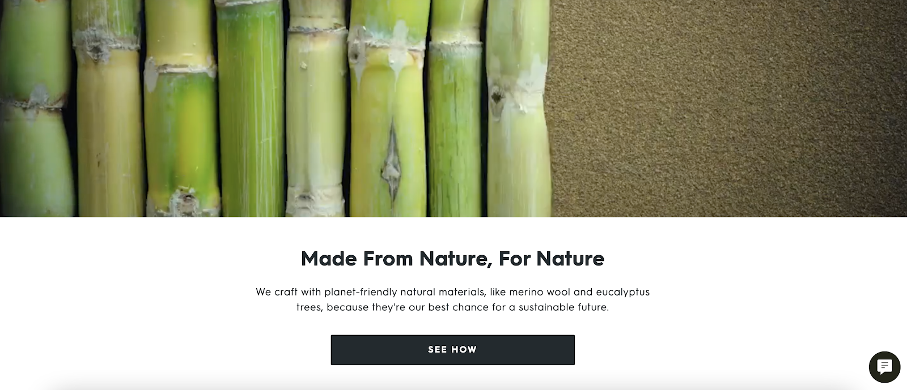
Now, let’s talk numbers.
We’ve conducted some background research on the financial health of the company, and we’re impressed. After being in the market for two years, Allbirds earned a whopping $100 million in total revenue. By September 2020, the company was valued at $1.7 billion and managed to carve out a huge piece of the sneaker and apparel market.
But how did a small sneaker company started by two people with no experience in footwear, become so popular?
Let’s find out!
1. Give customers something different than your competitors
Entering any well-established industry isn’t easy — especially when your competitors are Nike, Reebok, and Adidas. These three brands have been dominating the athletic and casual footwear market for decades, and helped create a worldwide sneaker culture.
In 2020 alone, Nike spent approximately $3.59 billion in advertising and promotion. That’s $300 million spent on marketing every month. Even for a big-name company like Nike, that’s over the top!
Compare that with Allbirds, who spent between $400,000 and $500,000 a month on marketing in 2016.
Four years later, Allbirds became a billion-dollar business ($1.7 billion, to be exact). While this doesn’t put them on the same level as Nike, it does solidify Allbirds’ status as a viable alternative to big-name sneakers.
Carving your place in an industry like this isn’t easy. Especially when your competitors spend more on marketing than your company is worth.
So, how did they do it? By offering an alternative to the streetwear model used by Nike and other industry titans.
In a recent interview with Glossy, co-founder Tim Brown said he wanted Allbirds to be the opposite of Nike’s business model.
“The initial idea of Allbirds was all about the reduction of the shoe down to its simplest form,” Brown said. “Which is the opposite of the streetwear model, with small changes and a million different models.”
When you visit Allbirds’ website, you’ll notice their selection isn’t expansive like Nike or Reebok. Their catalog of running shoes consists of three shoes and a handful of available colors.
This is a deliberate decision that aligns with Allbirds’ business model — to give customers a comfortable shoe that’s eco-friendly and environmentally sustainable to make.
2. Invest big in marketing and public relations
It’s not every day a startup goes all-in on brand marketing. But that’s precisely what Allbirds did when they devoted nearly 20% of their initial budget (between $400,000 and $500,000) to marketing and public relations (PR).
While unconventional, Allbirds’ move laid the foundation for their future success. People had already begun talking about Allbirds before the company sold their first pair of sneakers.
The month before Allbirds launched, they took to Instagram to generate buzz and promote their shoes.
They uploaded photos every few days, reminding followers of their upcoming launch date.
Each post included the #weareallbirds hashtag, which people could use to stay up to date with news around Allbirds’ upcoming launch.
Thanks to the ongoing publicity from their PR campaign and the success of their social media marketing strategy, Allbirds successfully cultivated a following of people interested in their shoes and their eco-friendly lifestyle.
Before long, every post Allbirds made was met with excitement from followers, who left comments like:
- “Buy me some plz thx”
- “Ready and many folks are waiting!”
- “So psyched to see these things”
But that’s not all. They also built a robust video marketing strategy to help build their brand. Their first video announced their launch, using humor to introduce the world to the Allbirds brand and what makes them special — producing ultra-comfortable, eco-friendly shoes.
Allbirds then generated more buzz by creating several videos looking at how their shoes are made using sustainable ingredients.
Allbirds’ PR campaign proved to be successful at creating interest around their product. But arguably their biggest promotions came from Time Magazine, who posted this article as a shout-out on the day Allbirds launched.
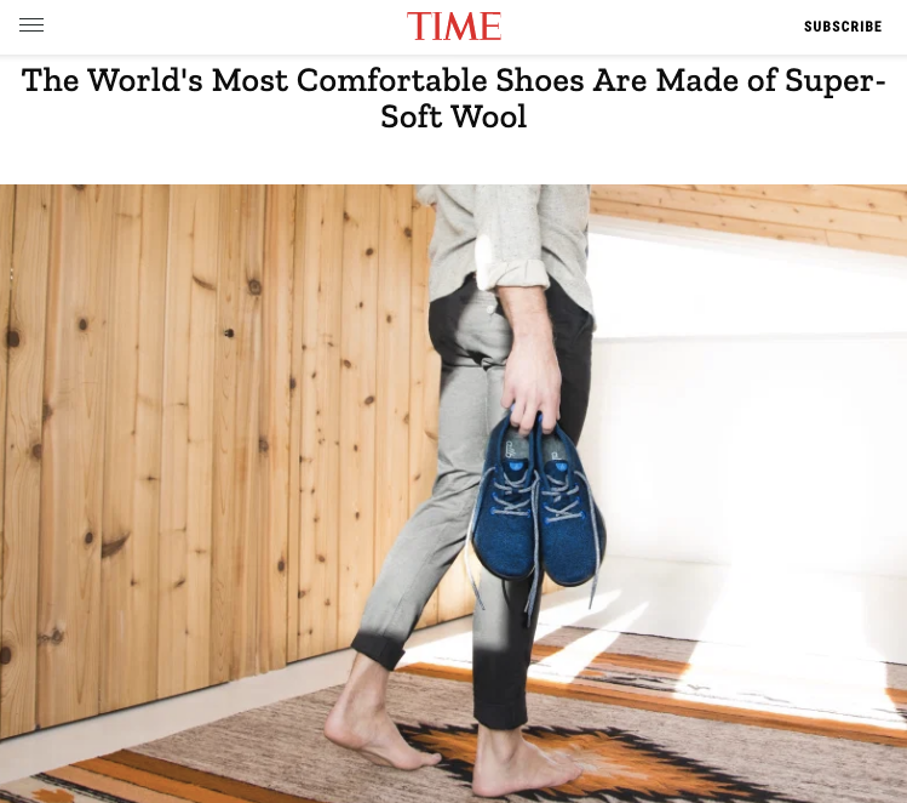
Other online magazines also published articles promoting the launch. This means Allbirds’ PR campaign was working.
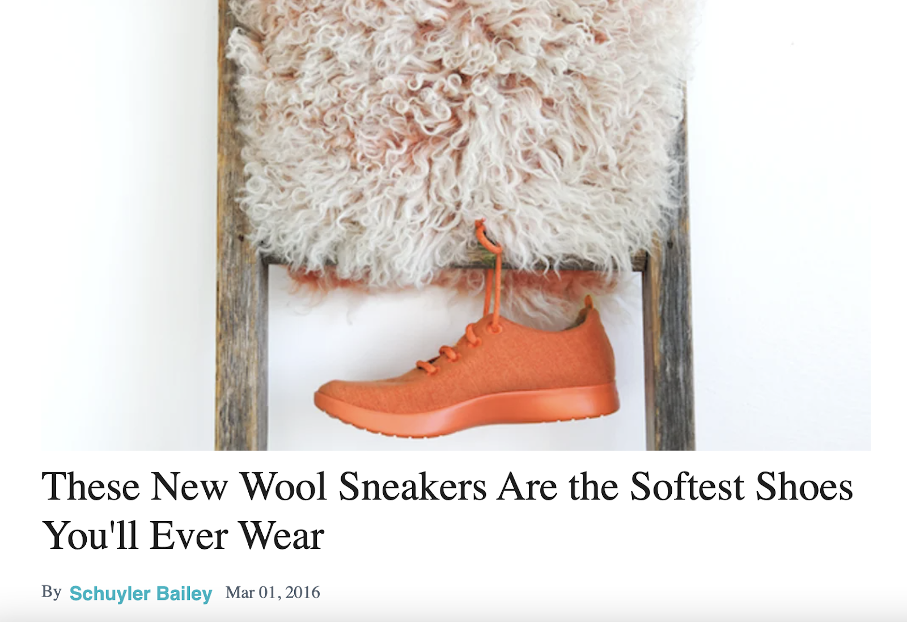
When asked about investing so heavily in marketing, co-founder Joey Zwillinger had this to say: “Brand, PR, and product. Those are the areas where we said there’s absolutely zero skimping on investment.”
And he was right. Their strategy paid off, big.
Allbirds reached their maximum target within their first five days, selling nearly $120,000 worth of shoes.
3. Use word-of-mouth marketing to get people talking about you
With Allbirds’ success at creating awareness and excitement over Instagram, you’d think a significant portion of their sales come from social media.
But that isn’t entirely the case. According to Brown, only a small amount of their sales were from social media advertising. The driving force behind Allbirds’ success has been word-of-mouth marketing through affiliates.
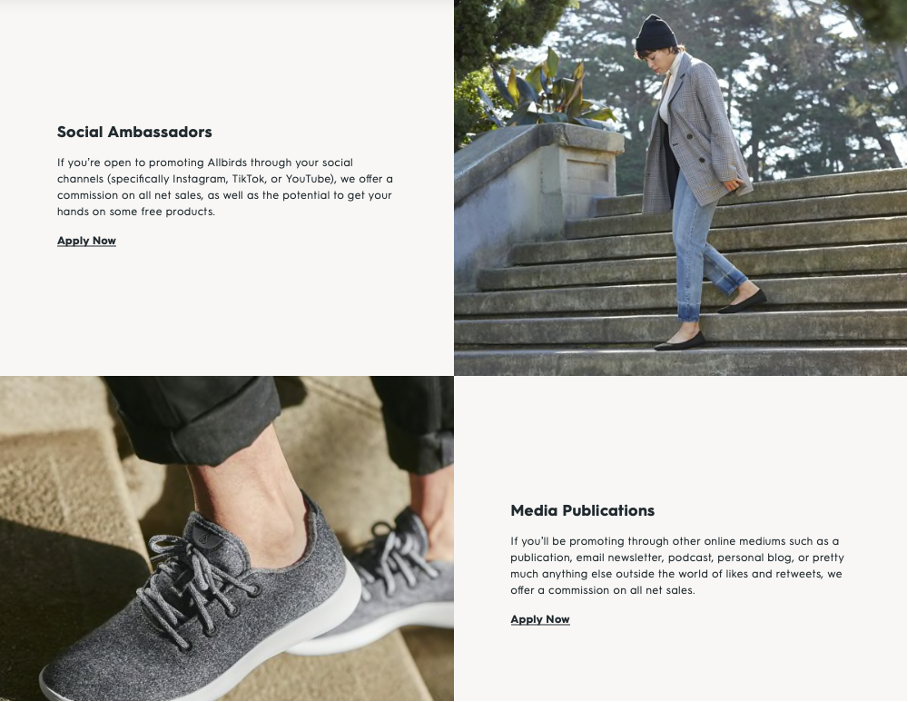
Allbirds adopted a two-pronged referral marketing strategy that hired:
- Social Ambassadors to promote their brand through social media outlets like TikTok, YouTube, and Instagram
- Content creators to promote Allbirds in publications, blogs, and podcasts
This approach lets them benefit from referral marketing over social media, while using the power of PR to get more people talking about their product.
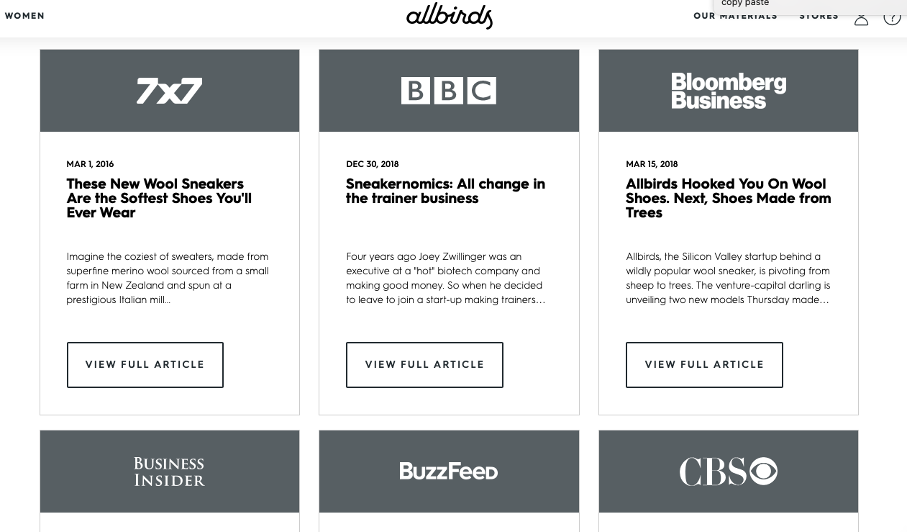
And it worked well for them. Dozens of media publications talked about Allbirds and how their business model prioritizes comfort and environmental sustainability over producing flavor-of-the-month sneakers. This approach helped the company connect with conscious consumers.
Allbirds got a lot of people talking about their brand. SpyFu did an inbound link analysis, looking at who was linking to Allbirds’ website. They found that 25% of the content linking to Allbirds’ site contained affiliate links.
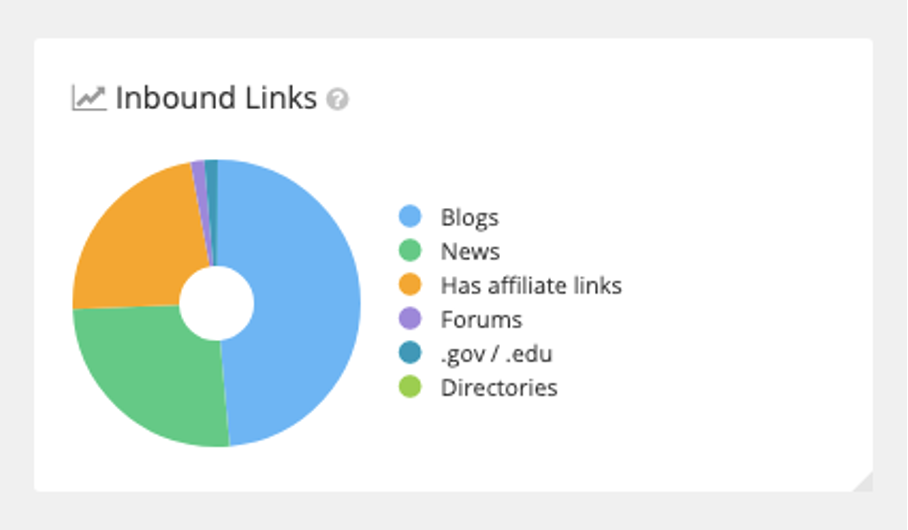
Source: SpyFu
This means that one-quarter of Allbirds’ online presence exists because of affiliates promoting their product. But they didn’t sacrifice quality for quantity. Allbirds’ affiliate program is great because of two very important factors:
- They have a great product that people want to talk about
- They took a stand on an important issue
Environmental sustainability is a hot topic right now, and it’s something that many people strongly support — especially Millennials and Gen Z.
By building their business model around sustainable footwear, Allbirds’ became part of a large community that shares their values and is eager to promote their brand and vision.
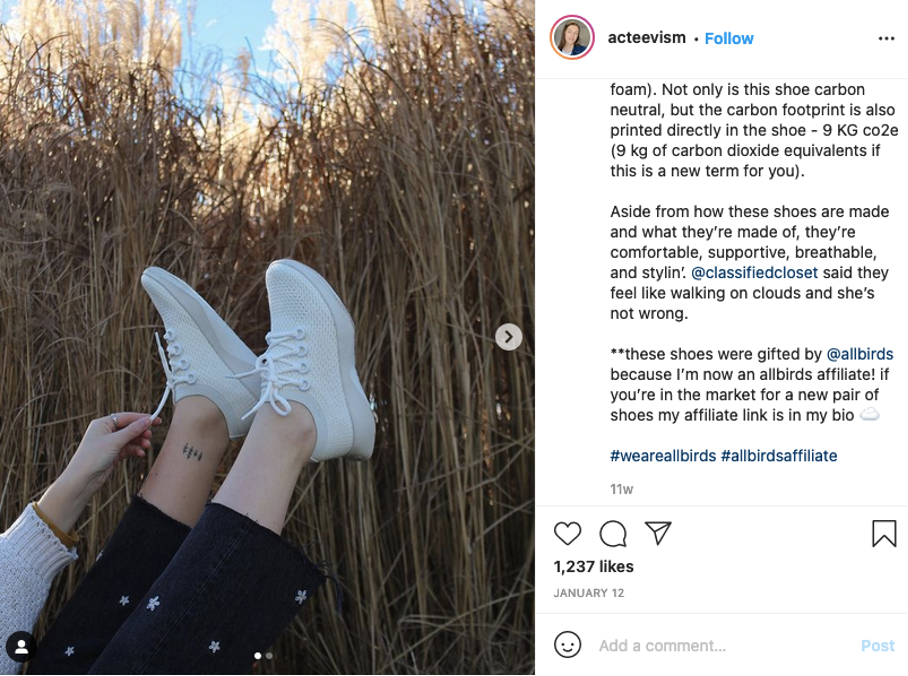
Partnering with people who align with their values and believe in their mission enables Allbirds to create compelling authentic content that people can relate to.
4. Collect feedback from social media and use it to improve your products
A lot of brands use social media to engage with customers. But Allbirds takes that strategy a step further by using social media as a tool for researching and developing new products.
If you’re wondering how they do this, it’s easier than you think. Allbirds simply listens to what their customers have to say, and use that feedback to help them improve products.
“That’s one of the aspects of our social strategy that we’re really proud of,” said Julie Channing, Allbirds VP of Marketing. “We listen to what consumers like, and regularly receive pieces of feedback that we can use to make sure we are holding true to our standard of making better shoes.”
Below is an example of how Allbirds did this using social media.
There are a few reasons why we love this post:
- The image has excellent composition and does a great job capturing the reader’s attention
- Allbirds listened to what their followers were saying and actually acted on it––something many companies don’t do
- They used this post as an opportunity to let customers know that Allbirds values their opinions
Larger-than-life brands like Nike seldom do this.
Companies like Allbirds can take advantage of that by spending extra time listening to customers over social media and applying their feedback — and that’s how your company can gain a leg up over the big brands.
5. Be consistent with the content you create
If you look at Allbirds’ advertisements, you’ll notice two things — they’re visually stunning and their content is consistent.
Allbirds has mastered the art of creating attention-grabbing advertisements, while staying consistent with their selling points.
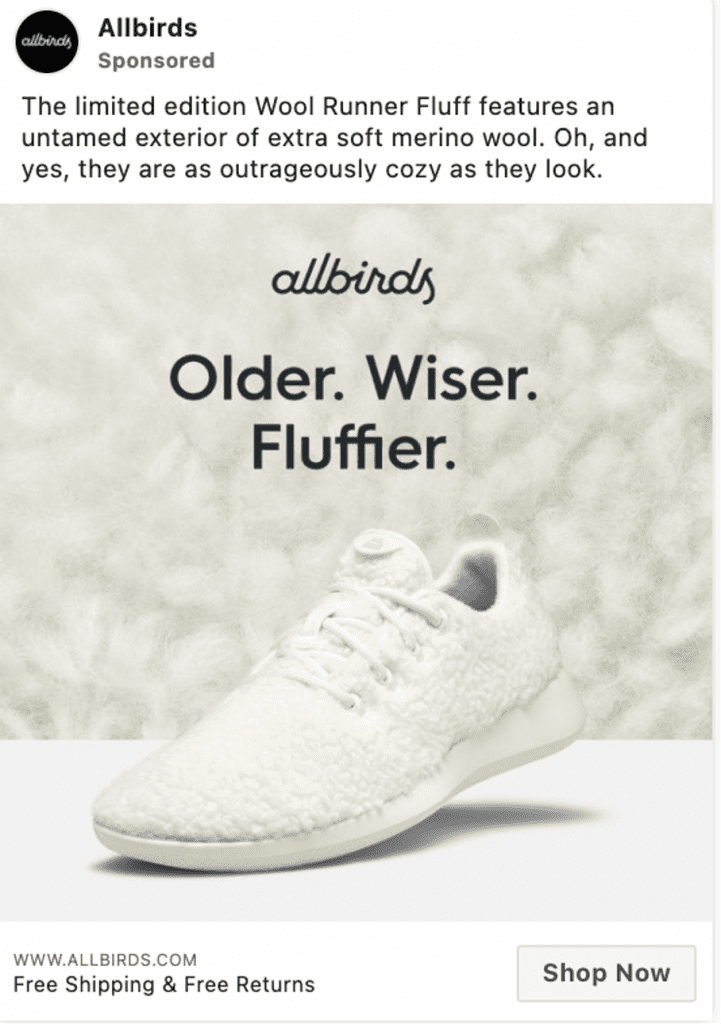
Every advertisement mentions something about comfort, because that’s an important part of their brand image. Allbirds is a footwear company that makes stylish and comfortable shoes that are an alternative to Nike, Reebok, and Adidas.
What’s more, Allbirds makes sure their advertisements resonate with their target audiences. In the Wool Runner Fluff advertisement above, they do an excellent job targeting customers who like fluffy things. And they don’t just do this with their product — they also do this with their wording.
Terms like “extra soft merino wool” and “outrageously cozy” conjure the image of being hugged by a warm, cozy blanket. And that language resonates with customers who like that, because now they can get the same feeling from their shoes.
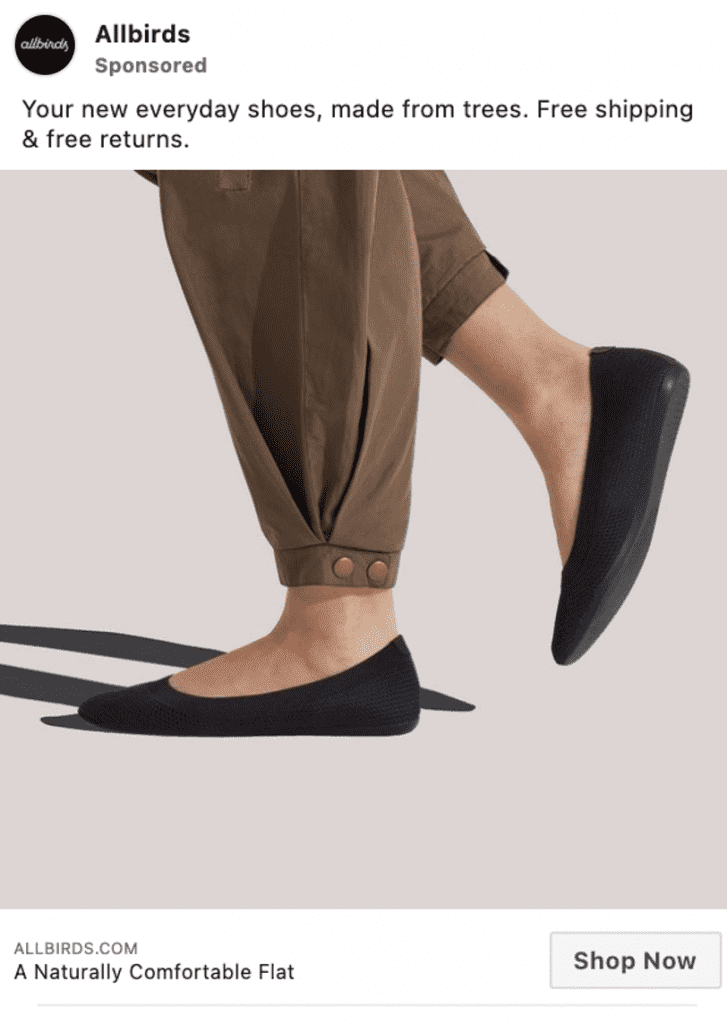
Another selling point Allbirds commonly includes, is sustainability. Phrases like “made from trees’’ and “a naturally comfortable fit” are used liberally in their ads and content, reminding customers of Allbirds’ commitment to creating shoes with eco-friendly materials.
Reading these advertisements makes you stop for a minute and think, “Wow. Shoes that are made from trees — really?” And that’s when Allbirds hits you with the element of surprise.
They successfully capture your attention, because most people never expect for shoes to be made from trees.
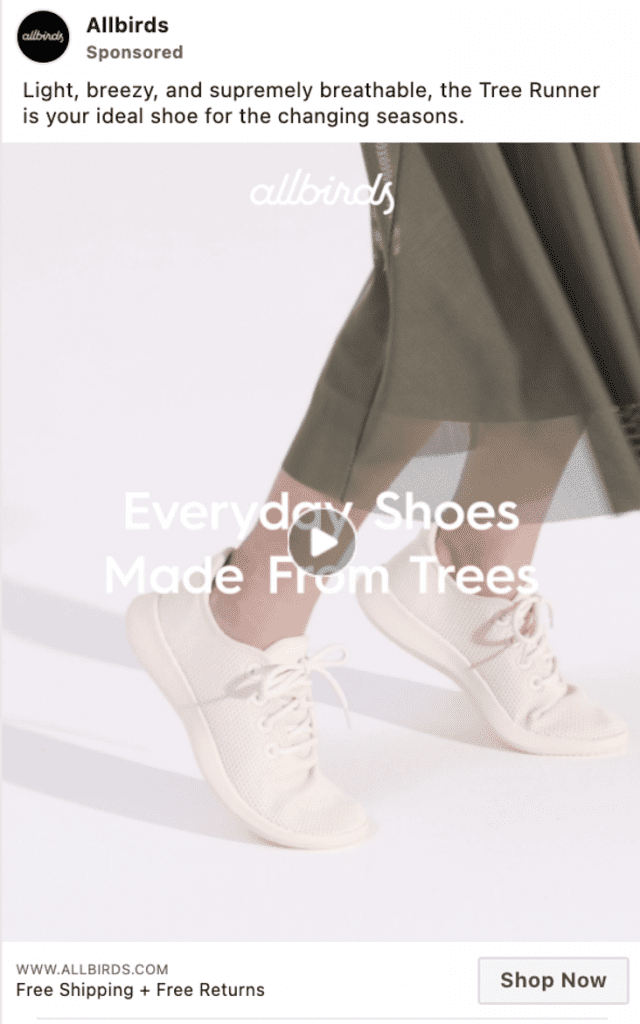
Allbirds also includes free shipping and free returns in every message.
Customers love free shipping, so including that in their advertisement is an effective way to motivate them to buy shoes.
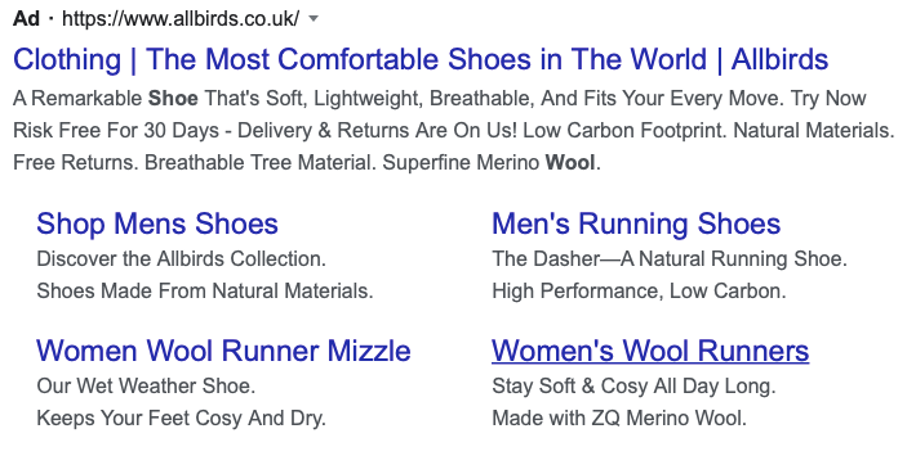
Allbirds applies that consistency to other advertisements, including this Google ad.
Marketing consistency is important because it reinforces what customers know about your brand. Allbirds focuses on elements like comfort and being eco-friendly in their marketing campaigns.
Imagine learning about Allbirds for the first time. You hear about this incredible company that makes comfortable sneakers using wool, trees, and other eco-friendly materials. Pretty impressive, right?
So, you check out their website and social media accounts. Every message you see includes the values Allbirds stands for — the same values that initially interested you. Every advertisement and social media message tells you what they have to offer and why they’re the perfect brand for you.
That’s the power of consistency — and Allbirds has mastered it. Every time a customer sees their advertisement, they’re reminded about what makes Allbirds different from their competitors.
This approach strengthens Allbirds’ brand by building credibility and making their advertisements easier for customers to recognize.
6. Don’t offer discounts
One of the most effective ways to increase sales is through discounts. After all, everyone loves a good discount or “buy one, get one free” deal. So, you might be shocked to learn that Allbirds has a strict “no discounts” policy.
They even have a landing page dedicated to it.
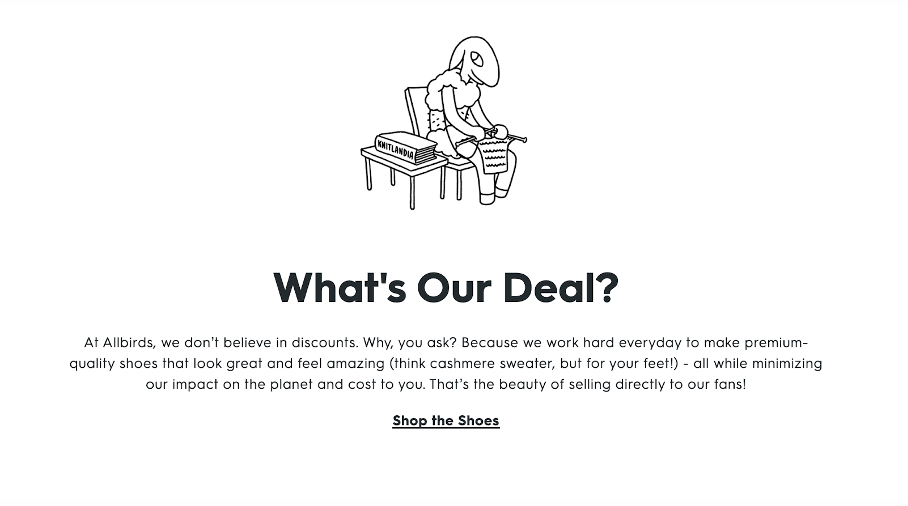
If discounts are proven to increase sales, why doesn’t Allbirds believe in them?
Because they subscribe to the philosophy, “you get what you pay for.” They make premium-quality shoes that look and feel amazing, and they’re confident that their prices reflect the value of their products.
With that said, Allbirds does keep their shoes affordable. Most shoes cost $95 and the most expensive shoe is priced at $145.
Allbirds is a DTC (direct-to-consumer) company, meaning they produce their shoes and sell them directly to the customer. This means that Allbirds’ shoes aren’t handled by intermediary businesses, such as wholesalers, distributors, and retail chains that influence sticker prices.
Instead of going to a local shoe store to buy a pair of Allbirds shoes, customers purchase them directly from the company on their website — or at an official Allbirds store. The DTC model gives the company the power to set their own prices and control their profit margins, while having the flexibility to innovate with new styles and materials.
Not only has Allbirds never offered a discount, they actually increased their prices by $1 for Black Friday. They pledged to match every extra dollar they earned during Black Friday, and donate the extra proceeds to support Greta Thunberg’s Fridays for Future movement to combat climate change.
This strategy was effective for a few reasons. For starters, nobody expected them to raise prices on Black Friday. Meaning Allbirds will attract attention by doing the opposite of what other brands are doing.
On top of that, their Black Friday strategy served as another example of Allbirds’ consistency. It served as an opportunity to remind everyone what they believe in, while letting customers donate a dollar to a good cause. That’s a very powerful marketing move that resonates well with the growing number of conscious consumers.
This is another example of how Allbirds consistently stays true to their company is founded upon — sustainability. Even before the Black Friday event, Allbirds posted a lot of content related to climate change on their Instagram account.
They also collaborated with bloggers and micro-influencers in sustainable fashion.
Allbirds was founded with a mission in mind — to give customers a comfortable, environmentally sustainable alternative to the streetwear brands that dominate the market.
Those values are present in all their social media content and advertising, meaning they cultivated a following that share similar eco-friendly views.
This is one of the reasons why the company’s no discount policy and their Black Friday marketing strategy worked so successfully.
And while we’re not saying that every company should adopt the same policy with discounts, we are saying it’s important to be consistent with your values and brand image. That way, you can grow a following that supports your values and policies, just like Allbirds did.
7. Don’t be afraid to have fun
Allbirds is serious about their product and about combating climate change — but they don’t take themselves too seriously. And that makes their content fun and engaging.
They partnered with Kiwi comedian, Bret McKenzie for their “Tread Lighter” campaign. This campaign is part of Allbirds’ ongoing effort to reduce their carbon footprint.

You may recognize Bret as one-half of the popular comedy duo, Flight of the Conchords. And when you visit Allbirds’ website, you’ll see him at the bottom of the page giving the sun a high-five.
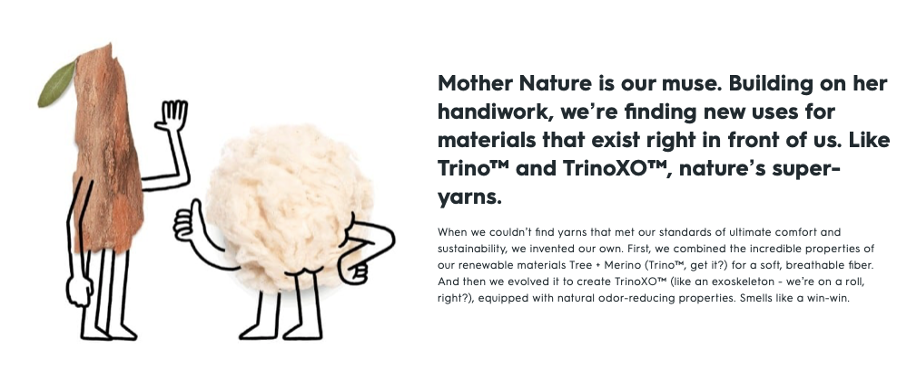
There’s also a very whimsical feel associated with much of their content, like the cartoon materials pictured above.
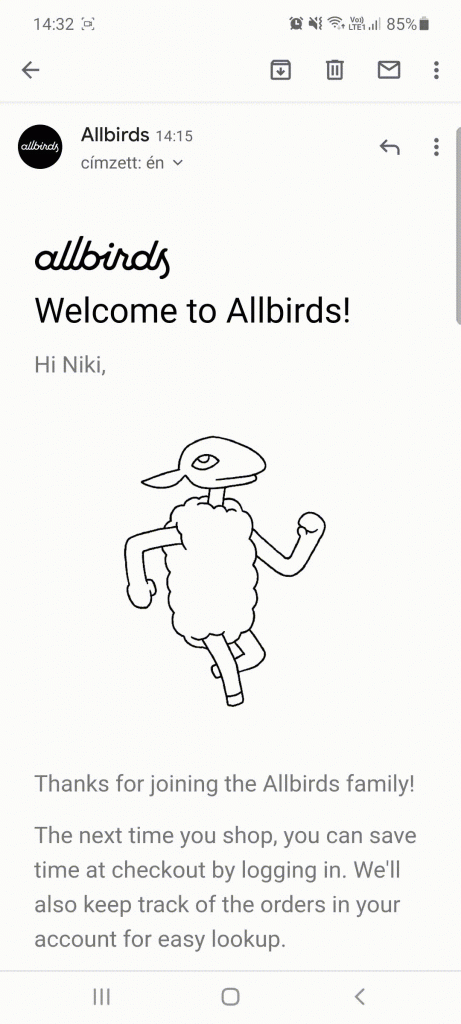
They use a playful, witty tone throughout the customer journey — even to address cart abandonment.
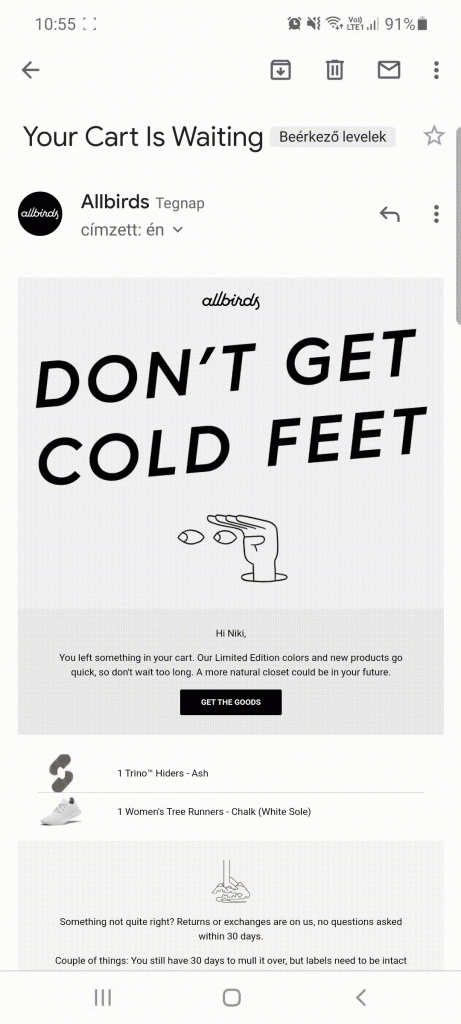
This enables them to be funny and whimsical, while also establishing themselves as a serious contender in the casual footwear market.
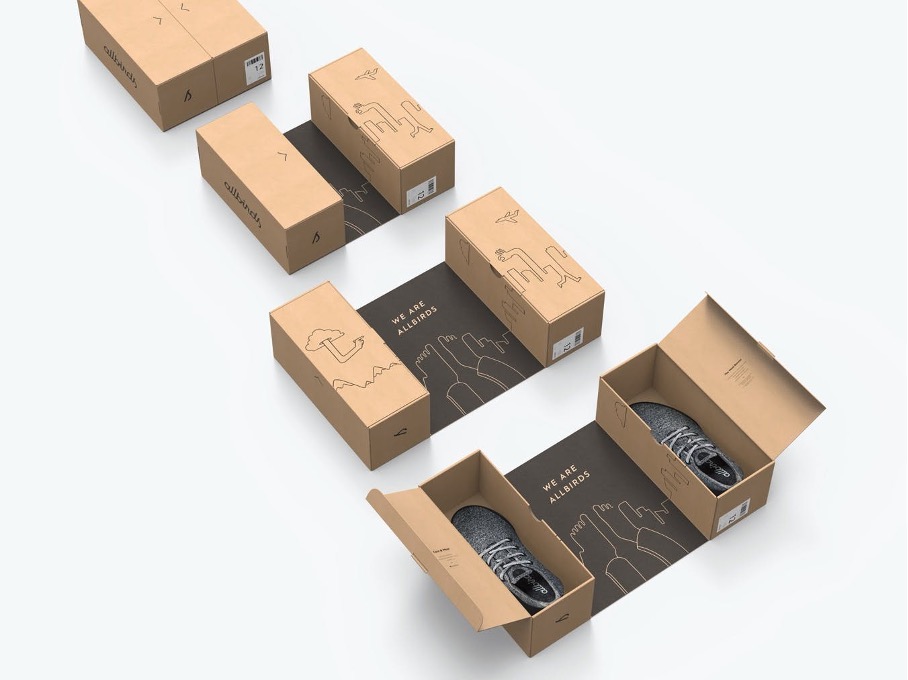
Source: Red Antler
Even their packaging is designed in the same fun, quirky manner. This approach has really helped Allbirds develop an identity that’s unique from other footwear companies, and also made their products more recognizable.
Wrapping up
Allbirds’ meteoric rise to fame is nothing short of amazing — particularly when their competitors are some of the biggest names in footwear.
How did they do it? For starters, they offered customers something completely different — comfortable, stylish shoes made from renewable materials.
But that’s not all. Allbirds also used the power of word-of-mouth advertising to get people talking about their brand. They partnered with content creators that shared their values for eco-friendly fashion. Those creators shared the Allbirds story across social media, podcasts, and popular publications.
This meant more people were learning about the “exciting new shoe company that makes sneakers from wool and natural materials.” And before long, Allbirds was able to grow their community and solidify their position as a legitimate player in the footwear industry.
While Allbirds has a unique story, their tactics can be used by businesses of all sizes. If you’re looking to grow your business, use Allbirds’ story as inspiration. Build a community with people who share your core values, and encourage people to spread your story.
All it takes is a good idea and a community that believes in you. If you got those two things, you could become the next disruptor in your industry.
Read more breakdowns:
- 13 Solid Tips for Mastering the Art of Personalization like Sephora
- How Gymshark Bulked Up to Being a $1+ Billion Brand
- 4 Tips to Help You Replicate Urban Outfitters’ Marketing Strategy
- 4 Steps for Growing Your Brand Organically Using ColourPop’s Marketing Strategy
- How Warby Parker Reached a $3 Billion Valuation and Became an Ecommerce Giant
Migration has never been easier
We made switching a no-brainer with our free, white-glove onboarding service so you can get started in the blink of an eye.

What should you do next?
Thanks for reading till the end. Here are 4 ways we can help you grow your business:
Boost conversions with proven use cases
Explore our Use Case Library, filled with actionable personalization examples and step-by-step guides to unlock your website's full potential. Check out Use Case Library
Create a free OptiMonk account
Create a free OptiMonk account and easily get started with popups and conversion rate optimization. Get OptiMonk free
Get advice from a CRO expert
Schedule a personalized discovery call with one of our experts to explore how OptiMonk can help you grow your business. Book a demo
Join our weekly newsletter
Real CRO insights & marketing tips. No fluff. Straight to your inbox. Subscribe now
Nikolett Lorincz
- Posted in
- Marketing Breakdowns
Partner with us
- © OptiMonk. All rights reserved!
- Terms of Use
- Privacy Policy
- Cookie Policy
Product updates: January Release 2025








